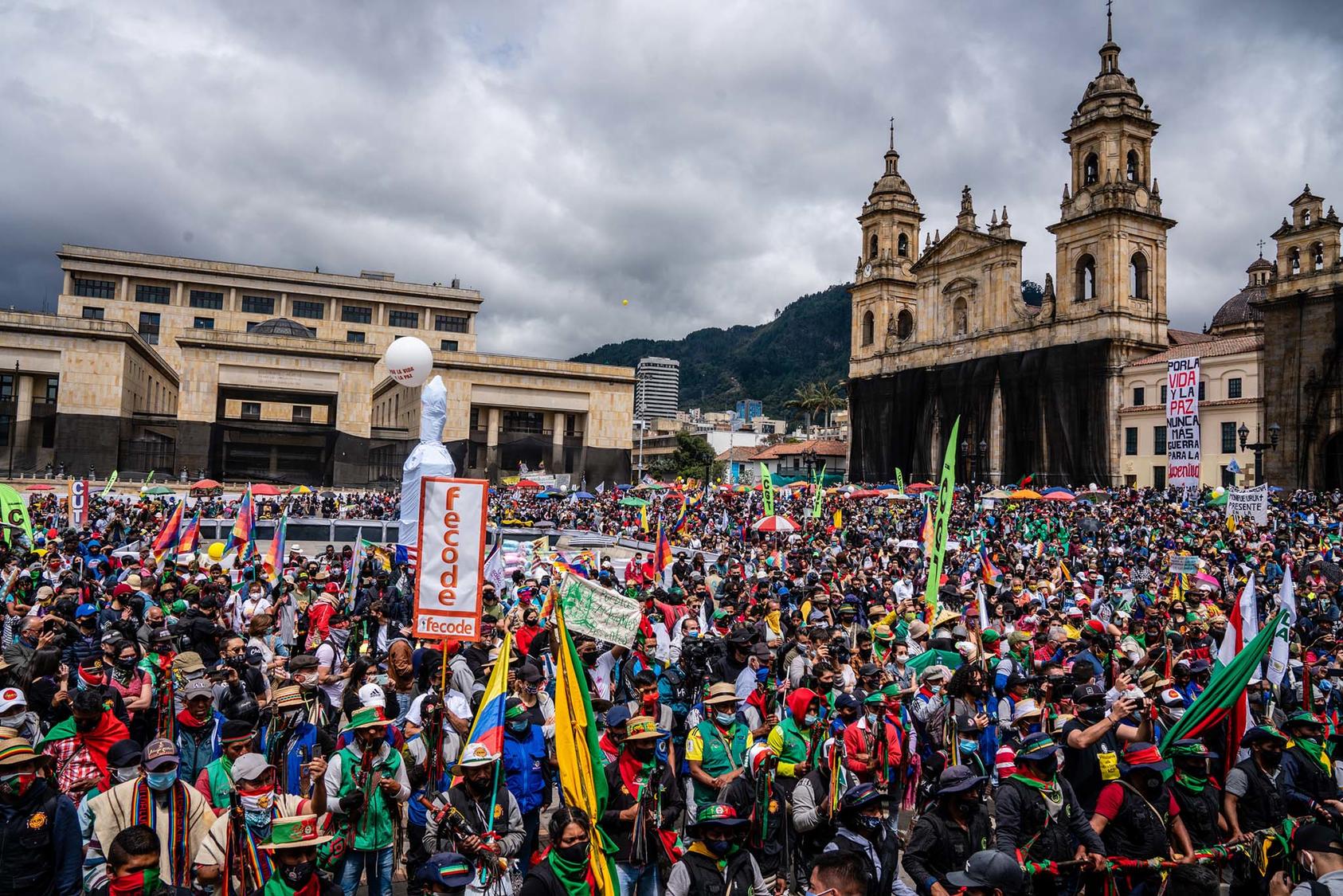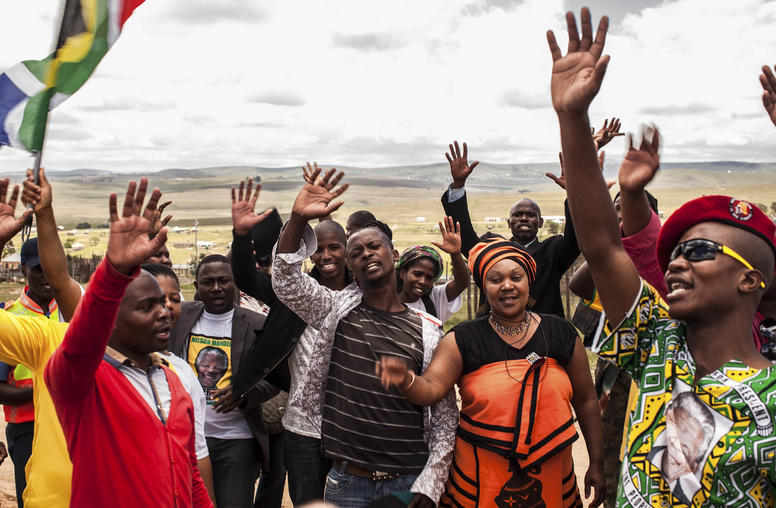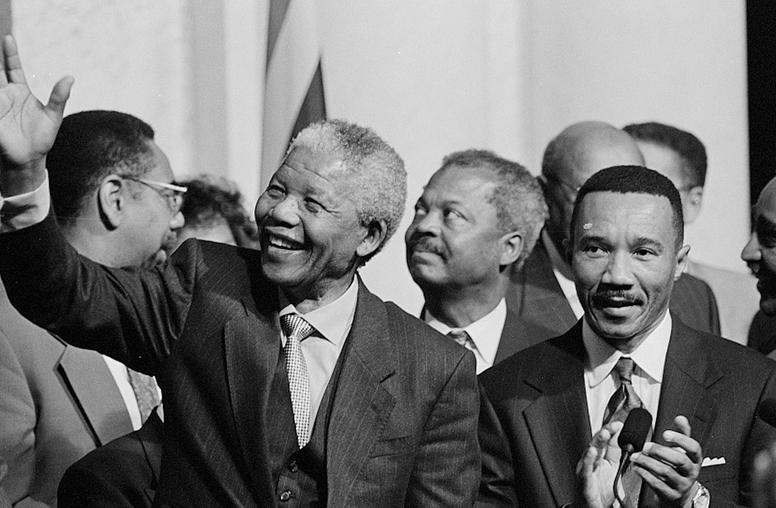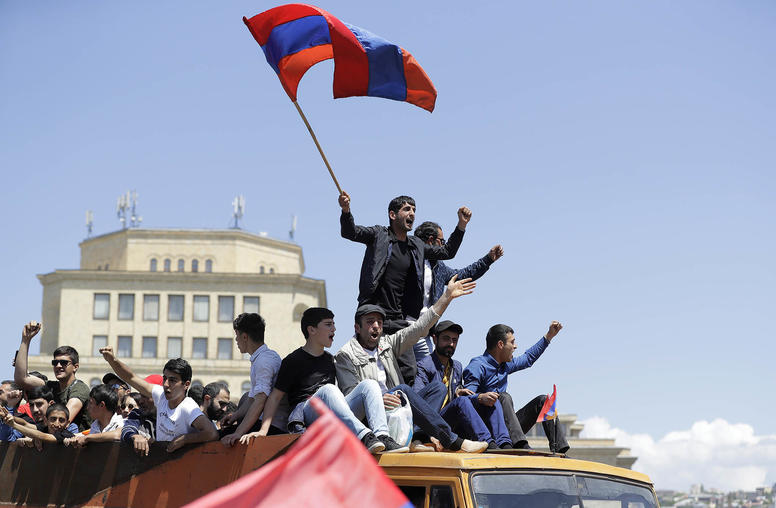2021 Will See More Global Protest: Can It Remain Peaceful?
Amid COVID, protests have revived, most without violence. Governments can help keep it that way.
After years of steadily rising nonviolent action movements from 2009 to 2019, the eruption of the coronavirus 10 months ago forced an initial lull. But movements in virtually every region of the world soon rebounded—and while destructive riots periodically seized headlines, data show that public demonstrations in 2020 remained overwhelmingly peaceful. Evidence suggests that 2021 will continue to see high levels of mass mobilization. If anything, pandemic-driven economic recession and deepening inequalities are likely to spur increased demonstrations. It will be up to governments to respond in ways that can keep mass action peaceful and engage movements to redress their grievances.

Two trends from 2020 suggest that this second global “year of COVID” will see further nonviolent action movements.
Quarantines Have Not Quelled Unrest
2019 saw nonviolent action surge, with more than 60 new campaigns igniting worldwide. When COVID forced governments to lock down populations and economies in spring 2020, public demonstrations briefly plummeted by 70 percent globally from the year before—but soon roared back. At least 15 million Americans protested racial injustice and police brutality, Belarusians rallied to demand their president’s ouster for election fraud, and India’s farmers blocked highways and railroads to oppose a proposed overhaul of farm prices and policies. Despite COVID, new protest movements increased to over 80 in 2020, according to the Carnegie Endowment’s Global Protest Tracker. It was a display of the resilience of nonviolent civic action.
The resurgence of protest is global. In Latin America, social movements and civil society organizations have organized mass demonstrations around the socio-economic impacts of COVID and a range of other issues. In Bolivia, thousands braved the lockdown imposed by an unpopular interim government and rallied several times to demand free and fair elections. In Colombia, a constellation of movements remained mobilized year-round to denounce police brutality, violence against social leaders, and President Iván Duque’s policies. In Venezuela, a crippling humanitarian crisis made long-running demands for freedom and democracy secondary to the people’s cry for relief and essential services from a bankrupt government.
In the Middle East and North Africa, demonstrators remained energized in remarkably different political situations. After forcing President Abdelaziz Bouteflika's resignation in 2019, Algerian protesters continued their campaign to press for a full dismantling of the old guard. Iraqis continued mass demonstrations that deposed Prime Minister Adel Abdul-Mahdi in 2019, meeting deadly repression in 2020 at the hands of a new government led by Prime Minister Mustafa al-Kadhimi. Even Syrians managed to rekindle nonviolent action in the province of Suweida, forcing President Bashar al-Assad to dismiss his prime minister because of economic crisis and a plummeting currency.
These examples illustrate both the staying power of many movements that predated the coronavirus outbreak and the increasing grievances that the pandemic and poor handling of its consequences by many world leaders have generated.
Amid Peaceful Protests, Riots Are the Exception
Disproportionate media attention to violent riots can give the impression that they were widespread—or even the majority of these movements. Yet the data show that peaceful demonstrations remain the overwhelmingly dominant form of mass action. The comprehensive database known as ACLED (the Armed Conflict Location & Event Data Project) shows that riots and other violent acts were only a small proportion of protest events. And while peaceful demonstrations quickly bounced back from their COVID lull, the number of riots continued to decline during the year.
Where protests turned violent, the shift typically was triggered by government repression of previously peaceful demonstrations, a pattern reflected in prior research on nonviolent action. In Sudan, mass protests continued after the 2019 nonviolent ouster of President Omar Al-Bashir and last year were often repressed amid growing public frustration over the incomplete transition toward democracy. Similarly, in Thailand, ongoing youth-led protests demanding political reforms have been overwhelmingly peaceful, and only turned to violent scuffles with police in response to instances of government repression.
It is crucial to remember that, even at times of great social strain, when people often view protest with fear and apprehension, ordinary citizens’ default mode of seeking political change is peaceful nonviolent action. Heavy-handed security force responses often only spark the violent reactions that they claim to prevent.
2021: More Protests Will Test Governments
If current trends hold, 2021 is likely to see significant increases in nonviolent action worldwide. Deepening economic recessions, skyrocketing unemployment rates, and rising inequalities due to COVID will likely become even more salient drivers for social unrest. Whether these future demonstrations remain peaceful will mainly be a function of how governments respond. Clamping down on dissent through force is likely to remain a critical driver for primarily peaceful protests to devolve into clashes. Both established and emerging movements must prioritize maintaining nonviolent discipline in their demonstrations—especially whenever they face violent repression. Governments should be prepared for the waves of contention to come, and ready to address demands expressed on the streets not through crackdowns but rather through dialogue and meaningful policy reform.
Emmanuel Davalillo Hidalgo is a senior regional specialist for Latin America at USIP.



